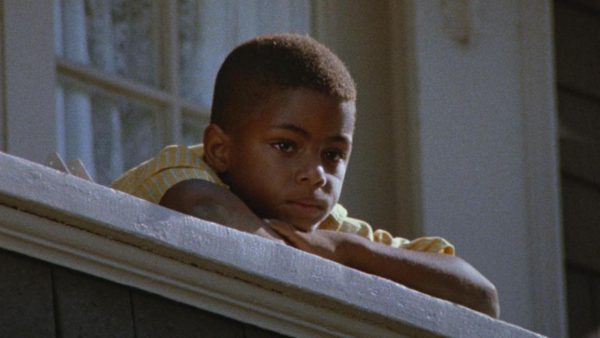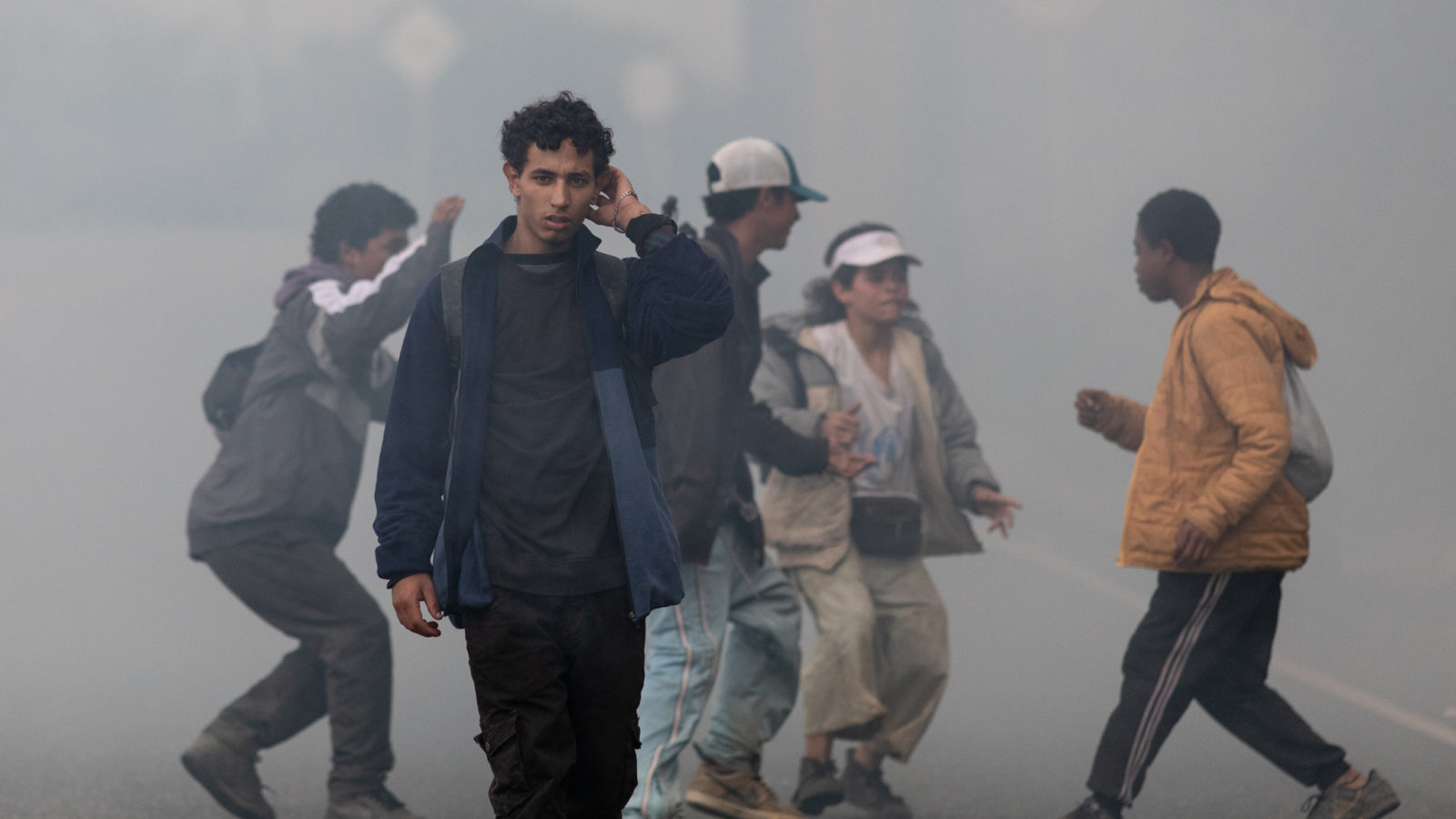
120 Best Films That Center BIPOC Experiences
February 17, 2025
Share:
It’s time to amplify the voices that have long been marginalized and bring to the forefront the rich tapestry of BIPOC experiences. Delve deep into the diverse narratives, struggles, triumphs, and resilience of Black, Indigenous, and People of Color communities. Prepare to be moved, educated, and inspired as we embark on a cinematic journey that expands our horizons and fosters empathy. These films are a testament to the beauty, strength, and unwavering spirit of BIPOC individuals, reminding us of the transformative power of cinema.
Read also:
81. Driveways (2019)
Genres
Director
Actors
Moods
This beautiful drama is set over a summer in New York State. Kathy and her son Cody drive to her estranged sister’s house, who had just passed. Kathy plans to quickly sell the house and go back to her normal life but that doesn’t happen when she learns that her sister was a hoarder. Forced to spend more time cleaning the house, her son sparks a friendship with the next-door neighbor, an old Korean War veteran.
Now, I know what you’re thinking, Gran Torino, right? The initial set up is the same but in Driveways is much more realistic, and its characters don’t really need to be redeemed (no one is screaming “get off my lawn” with a shotgun). In fact, the actor who plays the old man, the fantastic Brian Dennehy, brings so much kindness and heart to the story. It ended up his last movie before his passing, and what a beautiful farewell his performance is.
82. Raising Victor Vargas (2003)
Genres
Director
Actors
Moods
This small-scale but incredibly fun 88-minute drama from 2003 is about a group of Latino teenagers who grow up in New York’s Lower East Side.
Victor lives with his eccentric grandmother, which sometimes gets in the way of him pursuing Judy, his dream girl.
The actor who plays Victor is called Victor Rasuk, the one who plays Judy is called Judy Marte. This is a film so personal that both main characters needed to be named after the actors who play them.
83. Kaili Blues (2015)
Genres
Director
Actors
Moods
This startling debut from Chinese director Bi Gan is a mesmerizing synthesis of cinema and poetry. A man searching for his nephew goes on a journey that blurs the boundaries between time and space, and dreams and reality. All this is expressed through gorgeous and understated camerawork reminiscent of Apichatpong Weerasethakul’s languorous lens. However, Bi Gan’s style is all his own, including spectacular long takes whose sophistication and complexity only become apparent once they are done.
Kaili Blues’ hypnotic aesthetics are like a mud bath for you to soak and luxuriate in. There are no easy answers for putting together its past/present/future puzzle-box, and it’s best to leave the deconstructions for later viewings as repeated trips to Bi Gan’s dreamy recreation of his hometown will reveal even more.
84. To Sleep with Anger (1990)
Genres
Director
Actors
Moods
An old friend shows up on the doorstep of a happy family home and brings a whirlwind of trouble with him. Charles Burnett’s startling parable is tinged with magic and creeping danger. It digs into the tensions between African American folklore of the rural South and the assimilated middle-class lifestyle out West.
This rift takes the form of Harry, whose disquieting presence throws his old friend Gideon’s Los Angeles home into disarray. Danny Glover is captivating as the devilish visitor, delivering each line with playful ease and simmering menace. Burnett’s sly narrative doesn’t boil down to good and evil but instead offers a layered and enigmatic exploration of identity.
85. Motherland (2017)
Genres
Director
Actors
Moods
The Fabella Hospital in the Philippines is clearly overburdened and understaffed, and though it offers some of the lowest pregnancy delivery rates in the country, it remains unaffordable to most of its patients. It has been dubbed the world’s busiest maternity hospital because of this, and its boundless flurry of activity is what Ramona Diaz tries to capture in her cinéma-vérité film Motherland.
What’s interesting and ultimately heartening about the documentary is that despite the difficulties the subjects face, they are always presented with warmth and humanity. We don’t observe them from a strict or stylized distance, but rather, we move with them when they laugh, befriend each other, worry about their babies, curse their partners, and eventually leave. Indeed, the film is a land of mothers, filled with their authentic stories before anything else.
86. The Falls (2021)
Genres
Director
Actors
Moods
All the synopses going around the internet won’t fail to let you know that The Falls takes place at the height of the COVID-19 crisis. The film is certainly marketed that way, with commercial posters featuring the leads in ubiquitous face masks, socially distanced from the blurred crowd.
But interestingly, The Falls is not just a situational, pandemic-era story. More than anything else, it tells the story of Pin-wen and Xiao Jing, mother and daughter who, despite previously living a life of comfort, are now dealt with unfavorable circumstances (exacerbated but not entirely caused by the pandemic). Now, they are forced to navigate life with only each other, and it’s in the isolation they instate from the rest of the world do they forge a genuine and heartwrenching bond any and all family members will immediately recognize and perhaps even sympathize with.
87. Asako I & II (2018)
Genres
Director
Actors
Moods
Asako is in love with Baku—deeply and almost delusionally, in a way that can only manifest in young love. But when the freewheeling Baku ghosts Asako for good, she moves from Osaka all the way to Tokyo to start a new life. Years later, she’s startled to meet Baku’s doppelganger in Ryohei, an office man whose solid dependability and lack of artfulness, while endearing, could not place him any further from Baku. Confused and lonely, Asako tiptoes around her feelings for Ryohei and, in the process, raises thought-provoking questions about the meaning, ethics, and true purpose of love.
88. The Kings of the World (2022)
Genres
Director
Actors
Moods
The Kings of the World is a surreal coming-of-age movie that follows Rá, Culebro, Sere, Winny, and Nano, street kids who are on their way to claim land that’s rightfully theirs. Their one goal is to finally make a home after living without one for so long, but they’re hindered by the inevitable tragedies that befall kids of their kind: impoverished, alone, and abandoned.
The title is ironic, but it also hints at their state of mind: these boys are unstoppable, rabble-rousers who live like there’s no tomorrow. They tear down private property and invade inns not out of spite, necessarily, but out of a knowledge that whatever they do they’re gonna be put down anyway, so they might as well live without rules.
Tackling powerful themes like land restitution and youth neglect, The Kings of the World is one of the most agonizing movies you’ll ever see. It’s also Colombia’s official Best Foreign Language Film entry in the 2022 Academy Awards.
Read also:
89. Holy Spider (2022)
Genres
Director
Actors
Moods
As a crime thriller, Holy Spider is taut and terrifying, a modern noir that manages to unnerve despite the familiar moves it employs. The cat and mouse chase between serial killer and investigative reporter, for instance, is a classic tale, but that doesn’t make Holy Spider any less gripping. The film benefits from artful camerawork, considered acting (as the daring journalist Rahimi, Zar Amir Ebrahimi nabbed the Best Actress award at Cannes), and most of all a nuanced take on the situation in Iran.
Despite having a clear stance against violence and corruption, nothing in Holy Spider is black and white. Contradictions abound, and even when presented with brief moments of justice, we’re left scratching our heads looking for more. Such is the case when the system, and not just an individual, is the true pest.
90. A Thousand and One (2023)
Genres
Director
Actors
Moods
At once intimate and sweeping, A Thousand and One seamlessly weaves Inez’s personal turmoil and familial troubles with the systemic inequality that was rampant in ’90s New York. The hideous faces of gentrification, poverty, and police brutality are constantly appearing in the film, not merely because they lend weight to the story, but because they are inevitable for people like Inez. People who, despite their best efforts at achieving upward mobility are continually pushed down by self-serving institutions.
It’s easy for social issue dramas like this to buckle under the weight of their lofty goals, but nothing about A Thousand and One feels forced. Just the opposite, the film has an authentic quality to it—almost documentary-like in its precise depiction of Harlem throughout the years. It’s deeply personal and achingly tender, and everything else—the social commentary and the political beats—stems from that specificity.
Comments
Add a comment
Ready to cut the cord?
Here are the 12 cheapest Live TV streaming services for cord-cutting.
More lists
Lists on how to save money by cutting the cord.
Curated by humans, not algorithms.
© 2025 A Good Movie to Watch. Altona Studio, LLC, all rights reserved.











